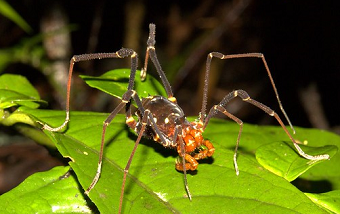A posse at the pass: predicting the movement of invasive animal species in Western Australia
Connectivity maps based on gene flow across landscapes can help us construct predictive spread models for invasive species. Here, we aim to build connectivity and landscape resistance map layers for organisms with a suite of different life history characteristics, to design a tool that takes life history attributes as an input and delivers a connectivity map for that organism, clearly displaying which landscape features maximise and minimise resistance to dispersal. This tool can be trained using both native species and already established pests as case studies, and examining the rate and direction of gene flow among their occurrence locations.
This project will use modern DNA sequencing methods to obtain tens of thousands of genome-wide markers (single-nucleotide polymorphisms) from a couple of dozen species of insects, amphibians, reptiles, birds, and mammals. The primary area of geographic interest will be Perth and the surrounding regions (e.g. from Busselton to Jurien Bay and across the Darling Plateau), but will be expanded as necessary depending on the dispersal syndromes of the target species. While some species already have recent tissue samples collected from across many of Perth’s reserves (e.g. reptiles and bandicoots), other species will require collection of new tissue samples.
By sampling small numbers of individuals (e.g. 1-3) per unit area, and sampling these units evenly across geographic space, we will obtain very high-resolution estimates of gene flow and population connectivity across the landscape. We then overlay a series of high-resolution spatial (raster) layers of environmental attributes (e.g. topography, rainfall, maximum temperature, vegetation cover) and anthropogenic activity (e.g. urbanisation index, traffic density), and use generalised linear modelling to identify which predictor layers explain the most variation in genetic connectivity.
Progress
This project started in mid-2023 and extends to mid-2027. Dr von Takach and colleagues are currently seeking Honours and Masters students to contribute to both this project and the complementary project spearheaded by Prof Phillips. Please get in touch with Brenton or Ben if you are interested in joining the team!
